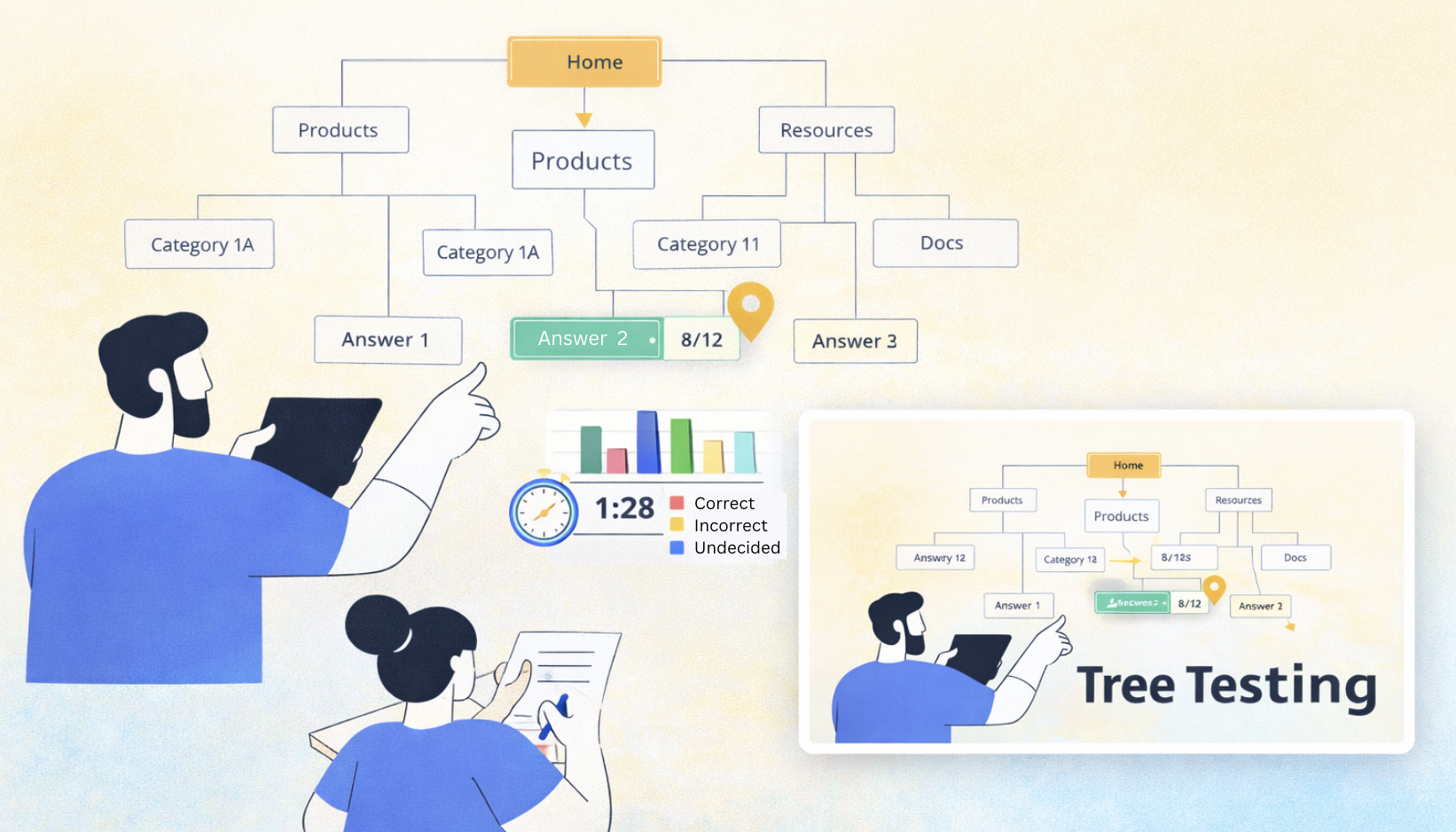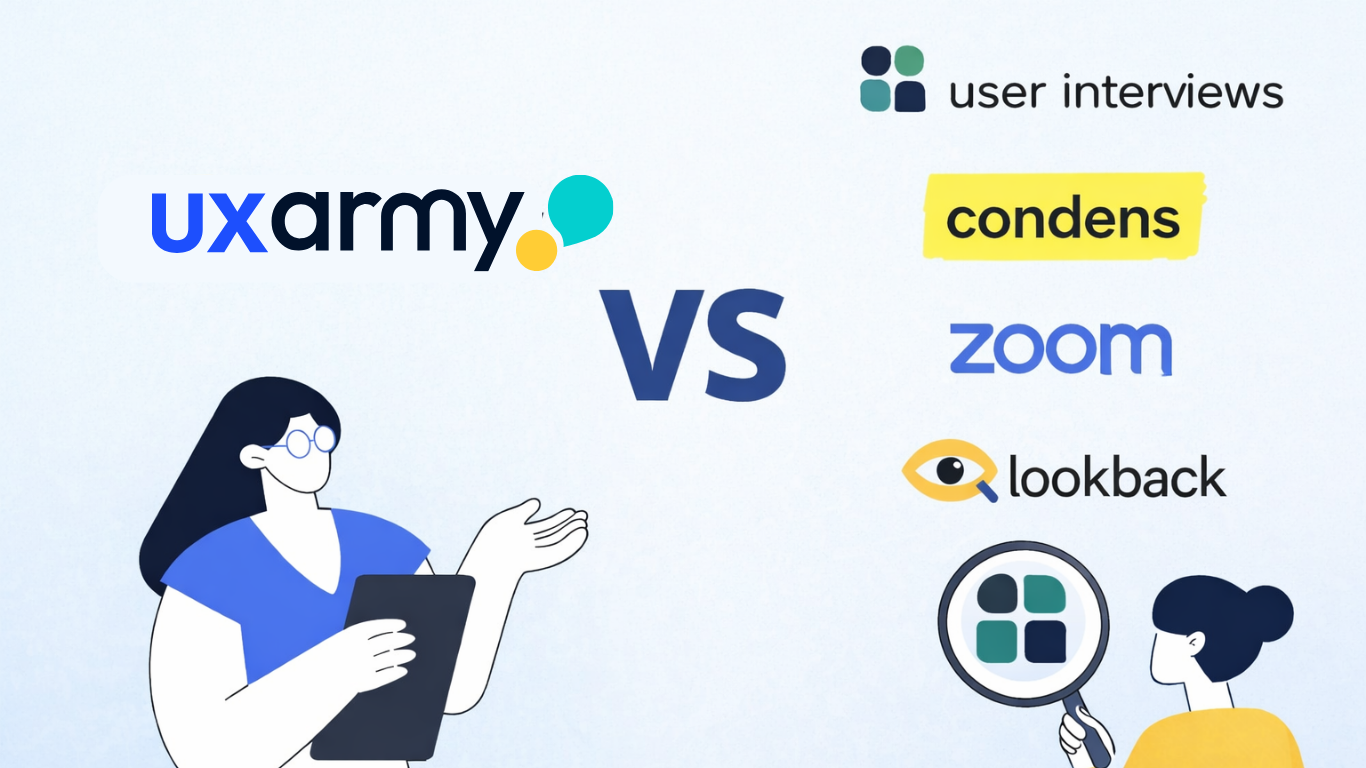Introduction: Why ROI Matters in UX Research
UX research ROI is becoming the strategic North Star for product teams striving to align user-centered design with measurable business impact. In today’s product-driven landscape, UX is no longer a luxury – it’s a differentiator. Yet, proving its value remains a challenge.
In today’s product-driven landscape, User Experience (UX) is no longer a luxury – it’s a strategic differentiator. Yet, many teams still struggle to justify investments in UX research. Why? Because unlike feature releases or marketing campaigns, UX research doesn’t always show immediate, visible results.
To change this perception, UX professionals must speak the language of business: Return on Investment (ROI). Showing how UX research leads to increased revenue, reduced costs, or faster development cycles is essential for gaining stakeholder buy-in and securing long-term commitment.
“Design is not just what it looks like and feels like. Design is how it works.” – Steve Jobs
The Cost of Poor UX (And Why Metrics Matter)
Bad UX is expensive. It leads to user frustration, increased churn, high support costs, and lost revenue. Consider the following:
- 88% of online users say they won’t return to a website after a bad user experience (Source: Amazon Web Services)
- $1 spent on UX research saves $100 in development costs later (Source: Forrester)
- A 10% improvement in usability can result in a 200% increase in conversion rates
These numbers underscore why measuring UX outcomes through product metrics is non-negotiable.
What Is ROI in the Context of UX Research?
At its core, ROI (Return on Investment) is a measure of the gain or loss generated on an investment relative to its cost. For UX research, ROI can be evaluated using:
ROI Formula:
ROI = (Net Gain from UX Improvements – Cost of UX Research) / Cost of UX Research
However, measuring ROI in UX goes beyond this simple formula. It involves tracking product metrics, user behavior, and operational outcomes that can be directly or indirectly tied to UX research activities.
UX ROI often shows up as:
- Higher user retention
- Faster time-to-market
- Reduced rework and engineering costs
- Higher conversion rates
- Reduced calls to Customer Care
- Improved NPS and CSAT scores
Core Product Metrics Influenced by UX Research
To understand the return on investment from UX research, organizations must look beyond surface-level outcomes and into the product metrics that directly or indirectly reflect improvements in usability, satisfaction, and engagement. UX research impacts multiple dimensions of product performance, and its influence can be tracked using both behavioral and attitudinal data.
Here are key metrics that UX research actively improves, categorized by function:
Usability & Efficiency Metrics
- Task Success Rate: Percentage of users who complete a specific task successfully. Improvements post-research indicate reduced friction.
- Time on Task: Time it takes to complete critical user flows like onboarding or checkout. A reduction typically suggests better efficiency.
- Error Rate: Frequency of mistakes users make during task execution, often tied to interface clarity and system feedback.
- Click Path Length: Number of steps or interactions to reach a goal. UX testing can reduce unnecessary steps and improve information architecture.
Engagement & Retention Metrics
- User Retention Rate: Percentage of users returning to the product after a period of time. Research-informed changes can lead to better long-term engagement.
- Churn Rate: The inverse of retention – understanding churn causes via user interviews and behavioral studies helps teams retain users longer.
- Feature Adoption Rate: Tracks if users are discovering and using new or improved features. Poor adoption often signals UX issues.
- Session Frequency: How often users interact with the product. UX improvements can drive habitual engagement.
Ready to build that trust and kickstart your research?
let’s make trust the foundation of every project you work on.

Business & Conversion Metrics
- Conversion Rate: Number of users completing a key goal (purchase, signup, form completion). One of the clearest indicators of usability and persuasive design.
- Drop-off Rate: Percentage of users abandoning a flow mid-way (e.g., during checkout). UX research helps identify where and why.
- Customer Lifetime Value (CLTV): UX research reduces friction, enhancing loyalty, which directly impacts Customer Lifetime Value over time.
- Cart Abandonment Rate: Particularly in e-commerce, a UX-optimized flow reduces abandonment during payment or form entry.
Satisfaction & Sentiment Metrics
- Net Promoter Score (NPS): Measures willingness to recommend. A rising NPS after UX changes is a powerful sign of improved user experience.
- Customer Satisfaction Score (CSAT): Collected post-interaction, this metric captures immediate feedback on usability and content clarity.
- System Usability Scale (SUS): A standardized scale used after testing sessions to assess perceived ease of use.
- Qualitative Feedback Themes: Recurring comments, emotional cues, and quotes from interviews and think-aloud sessions also represent valuable sentiment indicators.
Operational Metrics
- Support Ticket Volume: Fewer UX-related issues reported means a clearer, more intuitive interface.
- Time to Resolution: Reduction in time it takes to solve user problems, thanks to preventive UX fixes.
- Development Rework Rate: Research-led prototyping and validation can dramatically reduce post-release corrections.
UX research doesn’t just generate insights – it alters the metrics that matter most. By tightly coupling research findings with these KPIs, teams can demonstrate a direct line between UX investments and measurable product improvement.

Mapping UX Activities to Business Value
Here’s how specific UX research activities translate into measurable business outcomes:
| UX Activity | Metric Influenced | Business Outcome |
| Usability Testing | Task success, error rate | Increased conversions, fewer support tickets |
| Surveys / Interviews | NPS, CSAT | Better feature prioritization, user loyalty |
| Card Sorting / IA Studies | Time on task, findability | Reduced bounce rate, faster user onboarding |
| Prototype Testing | Conversion rate, error rate | Lower development rework, faster go-to-market |
| Diary Studies | Retention, churn | Improved long-term engagement |
Case Studies: UX Research Delivering Measurable ROI
Booking.com: Small Experiments, Big Returns
Booking.com runs thousands of A/B tests annually. One usability improvement to their date-picker flow led to a +4% conversion boost, equating to millions in additional bookings. This outcome was grounded in prior UX research that flagged confusion in calendar interactions.
UXArmy Client: E-Commerce Redesign
A mid-size online retail client used UXArmy to test their mobile checkout. The study revealed form field confusion and unclear CTA copy. After redesign:
- Task success rate increased by 28%
- Conversion rose by 14%
- Customer support requests dropped by 23%
Slack: Simplifying Onboarding
Slack used diary studies and prototype testing to improve team onboarding. The result was a 35% faster time-to-value and a 9-point increase in NPS.
These examples illustrate how UX research doesn’t just inform design – it shapes outcomes.
Methods to Measure UX Research Impact
Here are practical ways to quantify ROI from your UX initiatives:
1. Benchmark Studies
Run usability testing before and after a redesign to track improvements in:
- Task completion
- Time on task
- Satisfaction scores
2. Analytics Comparison
Use tools like Google Analytics or Mixpanel to compare behavioral metrics:
- Bounce rate
- Funnel progression
- Drop-off points
3. Tag Support Tickets
Categorize support tickets based on UX-related issues. Reduction in volume = UX success.
4. A/B Testing + UX Insights
Combine UX findings with controlled experiments to validate assumptions.
5. AI-Powered Summarization (e.g. UXArmy)
UXArmy’s platform can track key themes and sentiment across sessions and automatically highlight shifts in behavior over time.
Presenting ROI to Stakeholders
Numbers matter, but so does storytelling. Combine metrics with narrative to show the why behind the what.
Structure for a Strong ROI Case:
- The Problem – e.g. High cart abandonment
- The Research – e.g. Unmoderated test with 15 users
- The Insight – e.g. Confusing discount field
- The Fix – e.g. Clarified coupon logic and UI
- The Result – e.g. 12% increase in completed checkouts
Also include visual evidence:
- Video clips from user testing
- Heatmaps
- Graphs showing before-and-after metrics
“Executives don’t just want data – they want impact.” – Erika Hall
Common Pitfalls in Measuring UX ROI
Even the most thoughtful UX initiatives can fall flat if not measured wisely. To make UX research a credible investment, it’s crucial to avoid these common but avoidable pitfalls:
Attribution Overload
It’s tempting to pinpoint ROI to a single UX activity, but the reality is more complex. UX outcomes are shaped by a constellation of inputs: design, development, content, marketing, and infrastructure. Attempting to isolate UX’s contribution without recognizing its interdependence with other functions can lead to flawed conclusions. Instead, triangulate findings and aim for contribution over causation.
Undervaluing Qualitative Insights
ROI often emphasizes numbers, but not everything that matters can be measured easily. Qualitative gains like stronger user trust, reduced frustration, or clearer cross-functional communication can be significant. These soft metrics drive loyalty and efficiency, even if they don’t immediately translate into a KPI spike. Make space to value the human dimension of UX.
Short-Term Thinking
UX research is a long game. Expecting immediate results after a single sprint or release undermines its cumulative value. Behavioral change, retention, and satisfaction often manifest over weeks or months. Mature teams measure trends, not just snapshots.
Misaligned KPIs and Silos
If UX research goals aren’t tethered to product or business objectives, their value becomes difficult to justify. Collaborate early with stakeholders to align on shared metrics – from product managers to marketers to support leads. When everyone agrees on success criteria, ROI becomes not just easier to demonstrate – but also more meaningful.
Final Thoughts: ROI as a Strategic Advantage
UX research isn’t just an expense – it’s an investment in product excellence. By clearly mapping research to product metrics, UX teams can move from intuition-based justifications to evidence-based advocacy.
Organizations that consistently invest in research:
- Make better product decisions
- Iterate faster and smarter
- Build loyalty and trust with users
The next time you’re asked, “What’s the ROI of UX research?” – you’ll have the metrics to answer.
Suggested Reading
- Measuring ROI of UX: Nielsen Norman Group
- UX Metrics Cheat Sheet – UXBooth
Experience the power of UXArmy
Join countless professionals in simplifying your user research process and delivering results that matter
Frequently asked questions
Can you really measure UX research ROI?
Yes. Through benchmark testing, analytics, and business metrics, you can correlate UX activities to tangible outcomes.
What’s the most important metric for UX ROI?
It depends on your goal. For e-commerce, conversion matters. For SaaS, time-to-value and retention are key.
How long does it take to see ROI from UX research?
Some changes yield immediate results. Others, like onboarding or retention improvements, show impact over months.
Is qualitative research valuable for ROI?
Absolutely. It uncovers the behind behavior, which informs higher-impact design decisions.
Does UXArmy help in measuring ROI?
Yes. UXArmy provides both raw data and AI-driven insights that make it easy to tie user behavior to product metrics.




